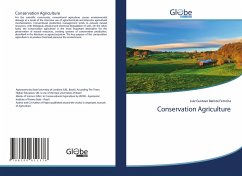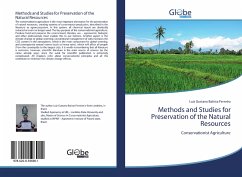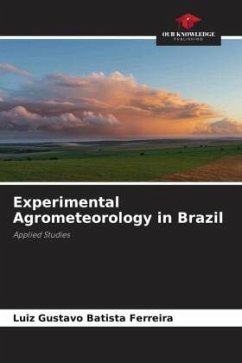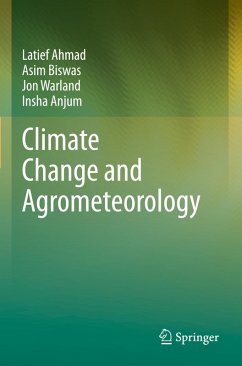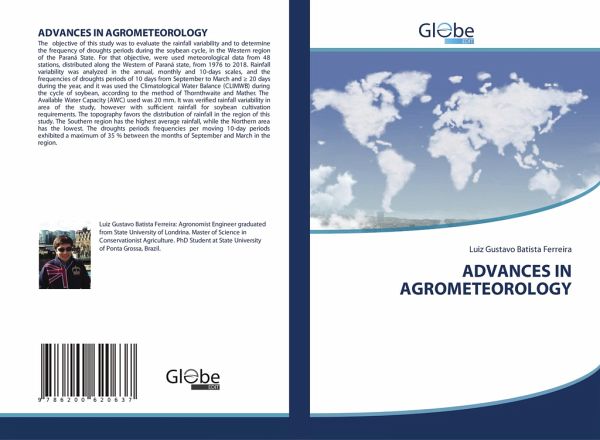
ADVANCES IN AGROMETEOROLOGY
Versandkostenfrei!
Versandfertig in 1-2 Wochen
24,99 €
inkl. MwSt.

PAYBACK Punkte
12 °P sammeln!
The objective of this study was to evaluate the rainfall variability and to determine the frequency of droughts periods during the soybean cycle, in the Western region of the Paraná State. For that objective, were used meteorological data from 48 stations, distributed along the Western of Paraná state, from 1976 to 2018. Rainfall variability was analyzed in the annual, monthly and 10-days scales, and the frequencies of droughts periods of 10 days from September to March and ¿ 20 days during the year, and it was used the Climatological Water Balance (CLIMWB) during the cycle of soybean, acco...
The objective of this study was to evaluate the rainfall variability and to determine the frequency of droughts periods during the soybean cycle, in the Western region of the Paraná State. For that objective, were used meteorological data from 48 stations, distributed along the Western of Paraná state, from 1976 to 2018. Rainfall variability was analyzed in the annual, monthly and 10-days scales, and the frequencies of droughts periods of 10 days from September to March and ¿ 20 days during the year, and it was used the Climatological Water Balance (CLIMWB) during the cycle of soybean, according to the method of Thornthwaite and Mather. The Available Water Capacity (AWC) used was 20 mm. It was verified rainfall variability in area of the study, however with sufficient rainfall for soybean cultivation requirements. The topography favors the distribution of rainfall in the region of this study. The Southern region has the highest average rainfall, while the Northern area has the lowest. The droughts periods frequencies per moving 10-day periods exhibited a maximum of 35 % between the months of September and March in the region.



